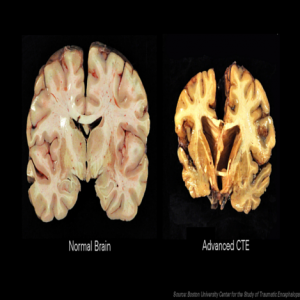Patrick Grange from Albuquerque, New Mexico has become the first soccer player to be diagnosed with Chronic Traumatic Encephalopathy. Grange took up the sport at age three and went on to play in college and top amateur leagues.
Grange died in April 2012 from ALS (Lou Gehrig’s disease). CTE was confirmed by Boston University’s Ann McKee in a post-mortem examination of Grange’s brain.
With an estimated 265 million players worldwide, soccer is the world’s most popular sport.
Some say McKee’s discovery makes CTE a global concern.
CTE is a degenerative brain disease caused by repeated hits to the head. Symptoms include memory loss, aggression, confusion, depression, addiction, and dementia. It’s most often linked to contact sports like boxing, football or hockey.
According to McKee, Grange’s brain had “very extensive frontal lobe damage.” The damage corresponded to the part of the head used when heading the ball – something Grange was famous for.
Grange had also suffered a few memorable concussions in his career. One in particular left him with 17 stitches after an on-field collision in college.
He was only 27 years old when diagnosed with ALS. His first symptom was a sore calf. He was paralyzed and in a wheelchair only months later. Grange died 17 months after diagnosis.
McKee said Grange was “absurdly young” when he developed ALS (average onset is 55, according to the ALS association). She believes the damage to his brain was linked to the early and aggressive onset of the disease.
Grange’s parents say they wish they had discouraged their son from heading soccer balls when he was young.
“Every park you go by, kids are playing soccer. And they’re doing headers. And that really bothers me,” said Grange’s mother. “….I hope that these kids and their parents are going to see to it that they take care of their heads.”
For More Information:
- Brain Trauma Extends to the Soccer Field, The New York Times







